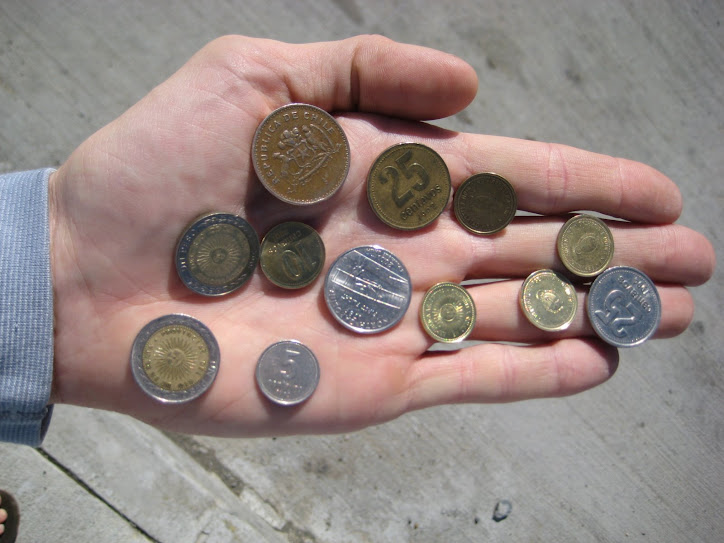 (warning: this gets a little gruesome at the end, so if you are a bit squeamish, you may want to stop reading when I give the warning)
(warning: this gets a little gruesome at the end, so if you are a bit squeamish, you may want to stop reading when I give the warning)Instead of heading on a school organized excursion to a local peak of just under 16,000 feet, I, along with two other classmates, decided to opt for the ´cultural experience´ of the Intiwatana. This is a festival used to celebrate the Andino new year. As opposed to our calendar where we just celebrated the beginning of the year 2008 AD, the Andino new year is now 5016. And unlike our Western celebrations of crystal balls dropping into overcrowded municipal squares, many folks here (mostly indigenous) celebrate by drinking all night, welcoming (with outstretched hands) the new sun and then sacrificing llamas. How could we NOT go to check this out?
We knew we were about to witness something pretty unique, but we also thought we were headed to a cultural center with lots of people and many other tourists since the director of our school gave us a detailed agenda of events that were to take place at this cultural center throughout the evening. Ha! Our taxi pulled up to a group of people standing outside a slightly crumbling, mud-ish building and the driver asked where the ´centro cultura´was. ¨Aqui!¨, the slightly bemused folks answered. (It was not until later that we realized why the people had such a curious look on their faces) ¨Great¨, we thought ¨that was easy¨. As the taxi pulled away, we were welcomed and each given a turn to pour some chicha over the altar table. After pouring a small amount of this beer-like alcohol (which is actually prepared by fermenting ground maize with the saliva of the preparer) onto the fire-heated stone, we dutifully drank the remainder of the gourd. Tasting a lot like a fraternity house basement smells, this was not exactly an ¨ahh, coca-cola¨ moment, but sure made us feel like we were part of the show. As we proceeded inside, we discovered why these kind folks were so curious as to how we heard about this meeting. It turns out the agenda we were given was two years old and instead of a large public gathering, this night was to be a very intimate discussion of beliefs and preparation for the next days celebration. Despite this, we were welcomed quite warmly; especially since two of us spoke third grade Spanish and understood even less. After more passing of the chicha gourd (yummm), a couple times ´cleansing´ourselves with the smoke of incense and listening to these folks share stories of why this was such an important day, we hopped in a taxi just before midnight and headed...somewhere.
 Excited by the really cool experience we just had, but a bit disappointed by not staying up all night and watching a llama sacrifice, we decided to head into the city for a few beers before finding another locale to continue our `culturing´. At about 4am, we called a taxi (as this is theoretically much safer than
Excited by the really cool experience we just had, but a bit disappointed by not staying up all night and watching a llama sacrifice, we decided to head into the city for a few beers before finding another locale to continue our `culturing´. At about 4am, we called a taxi (as this is theoretically much safer than  hopping in any taxi on the street here in Cochabamba) and headed toward the ruins near Sipe Sipe. Naturally, the driver tried to charge us 80 Bolivianos for this 45 minute cab ride, but knowing better, we paid the standard fare of 40Bs ($5.50). From there, we paid another 5Bs for a 45 minute ride up to the top of this mountain where many revelers had spent the night drinking, dancing and sitting around one of the 50+ fires that people had built. The moment I had been waiting for was almost near...my first llama sacrifice. Before that would happen, however, we would await the first sun of the new year to warm us. During this process, there was a lot of chanting which seemed to follow the ¨Prayers of the Faithful¨ (Lord hear our prayer) pattern where one person would yell out something (I think I heard ¨things like ¨peace¨, ¨unity of Bolivia¨, etc.) and the rest of the gathered would yell some sort of affirmation. All pretty cool.
hopping in any taxi on the street here in Cochabamba) and headed toward the ruins near Sipe Sipe. Naturally, the driver tried to charge us 80 Bolivianos for this 45 minute cab ride, but knowing better, we paid the standard fare of 40Bs ($5.50). From there, we paid another 5Bs for a 45 minute ride up to the top of this mountain where many revelers had spent the night drinking, dancing and sitting around one of the 50+ fires that people had built. The moment I had been waiting for was almost near...my first llama sacrifice. Before that would happen, however, we would await the first sun of the new year to warm us. During this process, there was a lot of chanting which seemed to follow the ¨Prayers of the Faithful¨ (Lord hear our prayer) pattern where one person would yell out something (I think I heard ¨things like ¨peace¨, ¨unity of Bolivia¨, etc.) and the rest of the gathered would yell some sort of affirmation. All pretty cool.
Then came the event I had been waiting for. (AND ONE THAT YOU MAY NOT CARE TO READ ABOUT) This would prove to be an event that, although excited to have been able to witness, I don´t ever care to see again. After the sun was sufficiently welcomed, three live llamas had their necks slit with little more than a steak knife. I watched as one llama struggled in pain while its neck was cut with the back and forth motion you would use to cut a loaf of Italian bread. A bucket was held under it´s neck to collect the streaming blood which would later be scattered on the earth and onto the people watching - all for good luck in the year ahead. Being so close, I knew there was a chance that I, too, could be showered with ´good luck´, but the first feeling of moisture on my face caught me completely off guard. I am still not sure where that first spurt of blood came from, but I suspect it was straight from the neck of the llama rather than from the ensuing gourdfuls that were thrown into the crowd. As the crimson showers continued, I quickly decided I had seen (and felt) enough and headed for safe ground further from the ritual. After watching a little more dancing and traditional music, I caught up with my friends and we headed back to our barrio for some much needed sleep. Preceded by a shower of course.















 one with the birthday having their face shoved in to the cake (glad I´ll be gone by December). Another highlight was the grand '
one with the birthday having their face shoved in to the cake (glad I´ll be gone by December). Another highlight was the grand '




